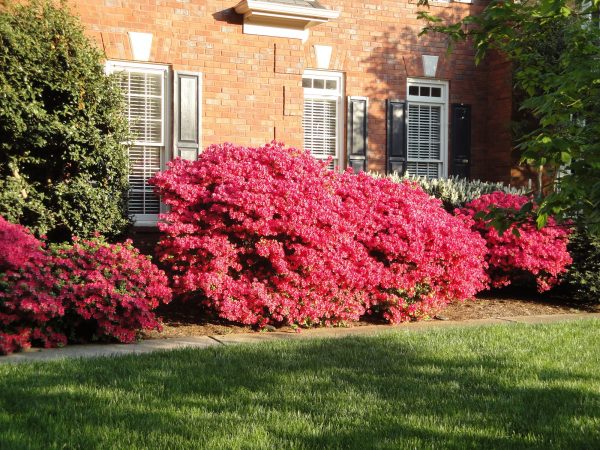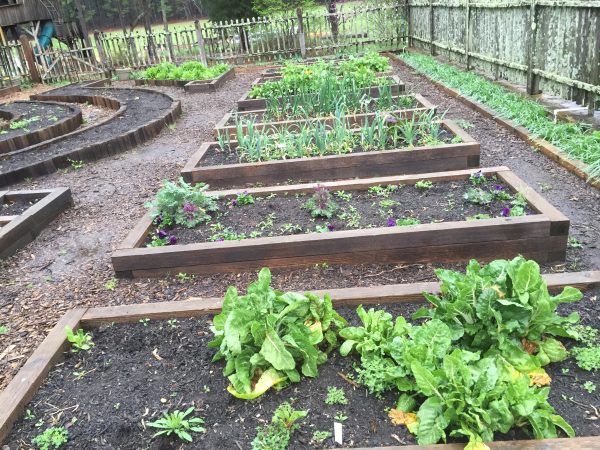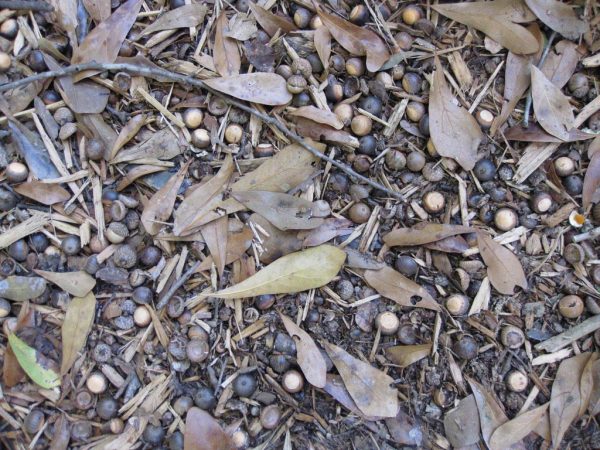DIGGING AND STORING TENDER BULBS
The caladium is a plant that has not yet achieved its full landscape potential. For the past three years, I have noticed more and more summer flower beds that use caladium leaves, rather than bright flowers, to provide color. The varieties ‘Red Flash’, ‘Pink Symphony’, ‘Anna Dank’ and ‘White Christmas’ have given gardeners and professional landscapers much more to work with than the old ‘Candidum’ our forebears knew.
Just as with coleus, breeders have developed caladiums which can tolerate full sunshine if sufficient water is available. Shade, though, is a caladium’s original habitat. Helen Phillips, Callaway Gardens horticulture educator, recently showed me a colorful shade garden with hardly a flower in evidence. The backbone of color was provided by caladium foliage.
Unlike daffodils, daylilies and Dutch iris, a caladium “bulb” will not survive an Atlanta winter outdoors. Along with dahlia tubers and elephant ear corms, it is usually best to dig them before the first frost and store them indoors.
DIGGING My favorite tool for exhuming bulbs is a spading fork. You’ll find that a fork allows you to heave a clump of caladiums from the ground without accidentally slicing through the bulbs. Once the plant is out of the ground, carefully shake the soil from the roots. Don’t remove the leaves: they help you keep the different varieties separate. Dahlias are usually a wild tangle of stems and foliage by late October. To make handling easier, cut the stems twelve inches above the ground before digging the tubers out of the ground.
Elephant ear corms can be quite large, bigger than a softball. Dig them as you do the caladiums. Use caution, though, if you decide to clip the stem and leaves from an elephant ear plant. The sap contains microscopic crystals of oxalic acid, which can be very dangerous to your eyes. Cover the stems with an old cloth as you prune off the leaves.
DRYING Find a dry, shady spot in which to spread your tender bulbs as they dry completely. This step is important because the bulbs harden their skin and heal wounds as they slowly dry. This helps prevent rot later while they are stored inside. Some gardeners wipe their bulbs with a 1:10 solution of bleach and water in order to kill fungi. Others dust the bulbs with sulfur or garden fungicide to protect them. Neither practice is absolutely essential but they do add a measure of protection. Let the bulbs dry outdoors until the foliage is withered and the stems begin to shrink. Do not let them freeze or get wet.
STORING Separate the bulbs by variety and color. Small cardboard boxes make good containers. Spread a one inch thick layer of dry peat moss in a box, then place bulbs so they do not touch each other. When one layer is finished, cover it thickly with peat moss and make another layer. Label each box clearly.
Unlike spring bulbs, which are best stored in cool temperatures, tender bulbs like it warm for the winter. A good storage place is in a closet where temperatures do not fall below 50 degrees.
By storing your tender bulbs for the winter, you can plant winter annuals like pansies, parsley and ornamental cabbage in their beds. Next spring, in May when the soil is quite warm, you can plant your treasures and enjoy their foliage and flowers once again.

















